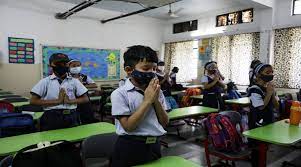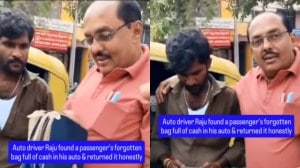90 govt schools shut, 500 merged in Gujarat since 2020: Govt data
This is the third such step after two failed attempts in 2013 and 2019 when the initiative had to be abandoned following protests from various sections, including villagers, educationists and the opposition Congress.
 Similarly, among 497 government primary schools merged across the state, nine schools had zero enrollment.
Similarly, among 497 government primary schools merged across the state, nine schools had zero enrollment. The Gujarat government has closed down around 90 government primary schools and merged nearly 500 of them since 2020, according to data accessed by The Indian Express.
This is the third such step after two failed attempts in 2013 and 2019 when the initiative had to be abandoned following protests from various sections, including villagers, educationists and the opposition Congress.
As per the data, of the 86 government primary schools closed down over the past two years, 28 schools did not have a single student, while another 36 schools had enrolled less than 10 students.
As per the “Mission Schools of Excellence (MSE)” scheme launched in 2020, the government was to upgrade half of the total government primary and secondary schools and shut down “non-viable” schools. The scheme is funded by the World Bank and the Asian Infrastructure Investment Bank (AIIB) for a period of six years.
Justifying the decision, State Education Minister Jitu Vaghani told this paper, “It was during the Congress regime that government schools were opened in falia (yards) and wadi (farms) without looking at the feasibility in the long run. Most of these schools have very poor enrollment, including a few with no students at all. What is wrong if these schools are merged or closed down? No student was forced to take admission in a private school but accommodated in nearest government schools.”
While schools with primary classes — Class 1 to 5 — have been merged with nearby government schools within a radius of one kilometre, upper primary classes — Class 6 to 8 — were merged with those within a distance of three kilometres.
“Beyond this limit, the state government provides transportation costs to students,” education secretary Vinod Rao said.
Similarly, among 497 government primary schools merged across the state, nine schools had zero enrollment. Over 130 schools had enrolled 1-10 students while another 107 schools had numbers between 11 and 20.
Over 1,300 government teachers who were affected with the merger and closing down, were accommodated in nearby schools.
As per the Socio Economic Review 2022 tabled in the state assembly, the number of government-run primary schools had gone down from 33,729 in 2018-’19 to 33,348 in in 2020-’21 .
“Consolidation and strengthening of bigger schools will take place now where students from smaller schools will be attracted towards these bigger ones. The smaller schools do not have to be closed down as pre-primary and Classes 1 and 2 might run from there while the remaining classes will be merged with nearby bigger schools,” said Rao.
The state government began merger of classes in nearly 1,470 upper primary classes where less than 20 students had enrolled, with their counterpart classes in nearby schools in 2021, and initiated steps to accommodate 1,800 teachers who were rendered surplus.
In 1,280 of these schools, classes 6 and 7 were merged while in 190 schools, only class 5 were merged with schools nearby.
Initially, there was resentment to the decision and the education department brought down the strength in classes from 25 to 30 students to 20 or less, assuring that no surplus teacher would be transferred outside the district.
While merging classes involves only a few selected classes, the school continues to run but in a school merger entire school is merged with a nearby school. In both these, number of surplus teachers varies depending on factors like classes merged and teachers employed for merged classes or at the merged school.
Rao said that most of the teachers were accomodated in the same taluka while 100 per cent were within the same district. In Kutch, 180 schools were merged — the highest in the state, while in Jamnagar, 14 schools with 100 classes were merged.
The government first decided to merge schools in 2013, identifying nearly 13,450 of nearly 33,000 primary schools, with strength below 100 and 6,826 primary schools with strength below 50. However, the move was abandoned due to protests from villagers, civil society, educationists as well as teachers associations.
The second such move in August 2019, for merging 3,000 primary schools of the 5,100 schools, could not go ahead following opposition and protests by the Congress.







